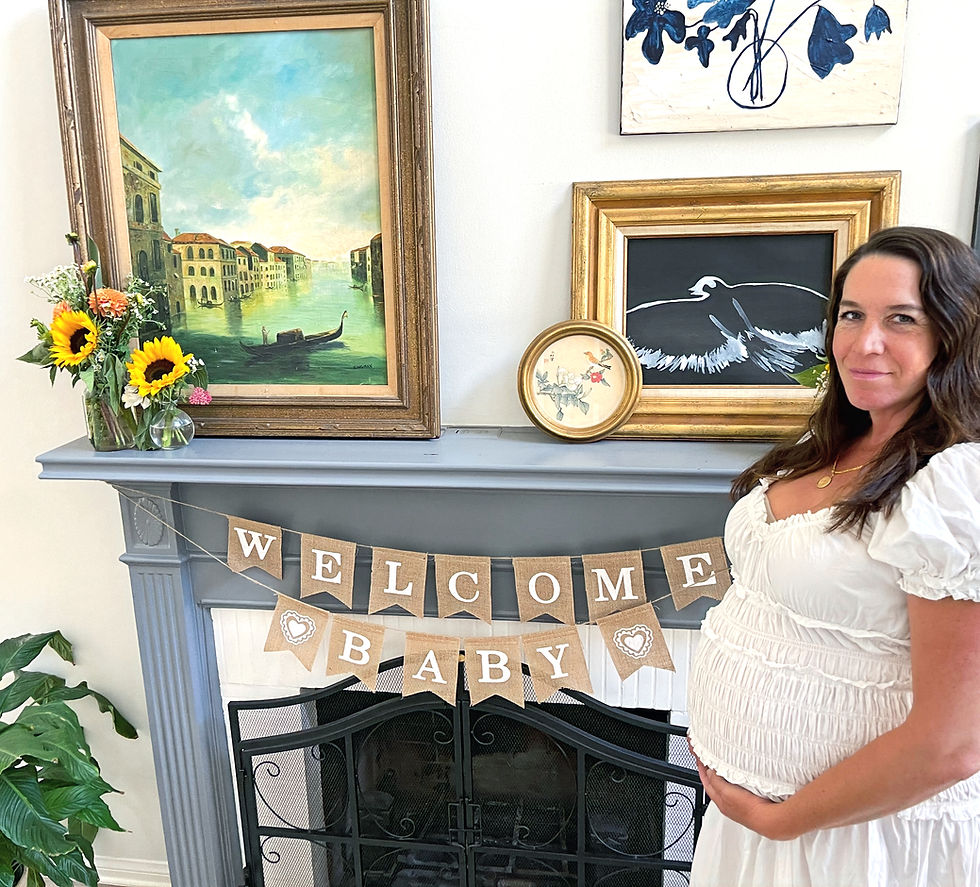The Zero Waste Bébé: Part Deux- Diapering
- morganlariah
- May 9, 2024
- 4 min read
Updated: Jun 18

Diapering is usually where the most waste is created in the first years of a baby's life.
I knew that I wanted us to use cloth diapers for Theo for his health and the planet's but I wasn't quite sure what that would look like (why choose cloth diapers? Here is a good article that breaks it down). Chuck thought it would be a great idea if we used a diaper service so I set out and did some research. We settled on Luludew Diaper Service. This is a fantastic company that truly cares about babies and the environment. It is extremely expensive, though, and all of that money I saved from getting second hand baby supplies for free from my Buy Nothing Group all went to Theo's diapers. They offer different types of diapers for their service as well as cloth towels, napkins and refills for various cleaning and self care products. If you opt for their diaper service, other than the price, it's comparable to disposable diapers in terms of ease. When your baby has a soiled diaper, you put that diaper in the provided pail and once a week a driver picks up the old diapers and delivers new ones. There is another diaper service company in Pasadena I found called Dy Dee that looks fantastic as well.
You can also buy cloth diapers and wash them at home. This option will save you thousands of dollars in the long run. We opted for the "All in One" diapers from Luludew and they are amazing. The diapers have an outer cover that is water proof with snaps so you don't have to deal with that putting on a cover or the fasteners. Look for diapers made from organic cloth whenever you can as these diapers are going on a very sensitive area and baby skin is so sensitive. Some organic All in Ones can be found here (as well as other products):

Sadly, diapering is the place where we have created the most waste due to the wipes. Most wipes are made from a polyester blend- this means plastic and endocrine disruptors among other icky things. There are many, many options for wipes made from compostable bamboo. We decided on Ecorignals for our bamboo wipes. These are wet wipes so they do come in a plastic container but they don't have have the extra plastic cap that some wipes do that really aren't necessary and just add to all the plastic in the world. I'll be honest and say I don't feel great about the plastic bag they come in, but after a few poopy predicaments over the past two years, I have been grateful for these wet wipes as these situations wouldn't have been conducive to a reusable cloth wipe scenario. It was sheer panic, damage control and cleanup and there was no time for mixing water for a resusable cloth wipe. With that said, cloth wipes are an option! You can make your own cloth wipe solution and put them in a silicon bag, put the soiled wipes in a separate silicon bag and then launder them. This is what the ideal, stronger me would have done with wipes.
We have taken a few trips since Theo was born. In this case, we've used Andy Pandy disposable diapers. Andy Pandy diapers are extremely clean. A lot of truly nasty stuff can go into disposable diapers (think bleach, phthalates, dyes, fragrances, and PFAS) so please do your research. If you're on Instagram, the most comprehensive diaper brand analysis I've come across can be found on the Natural Minded Momma account under her post, "The Ultimate Safer Baby Diapers List." She covers most of the brands you will find on the market (if a brand isn't listed here then it's because the brand wouldn't be transparent with her about its ingredients) and rates them. At the end of the post she explains what goes into diapers and what to consider when choosing a brand. Just like the cometic industry, the diaper industry isn't regulated. We have to do our due diligence to keep our babies safe.

Lastly, there is the cream that acts a barrier between the baby's skin and the diaper. Again, just like all of this, there are products out there that are just full of utter nasties. I looked for a zero waste, non-toxic cream and decided upon Humble Hive's Bummy Cream for the first year after Theo was born. After things settled a little bit and I could think again, I realized that I could make a similar bummy cream at home. I modified her recipe and came up with:
18 oz. Organic Pure Shea Butter
1 cup Organic Coconut Oil
1 cup grated Beeswax
1/2 cup Bentonite Clay
1 cup Non-Nano Zinc Oxide
4 droppers of Organic Chamomile Oil
Put all ingredients into a double boiler and then pour into tins. This will make about 32 oz. (which is a lot!).
We've had great success with all of the products with chose. This is just a starting point- message me with any questions and happy diapering!





Comments